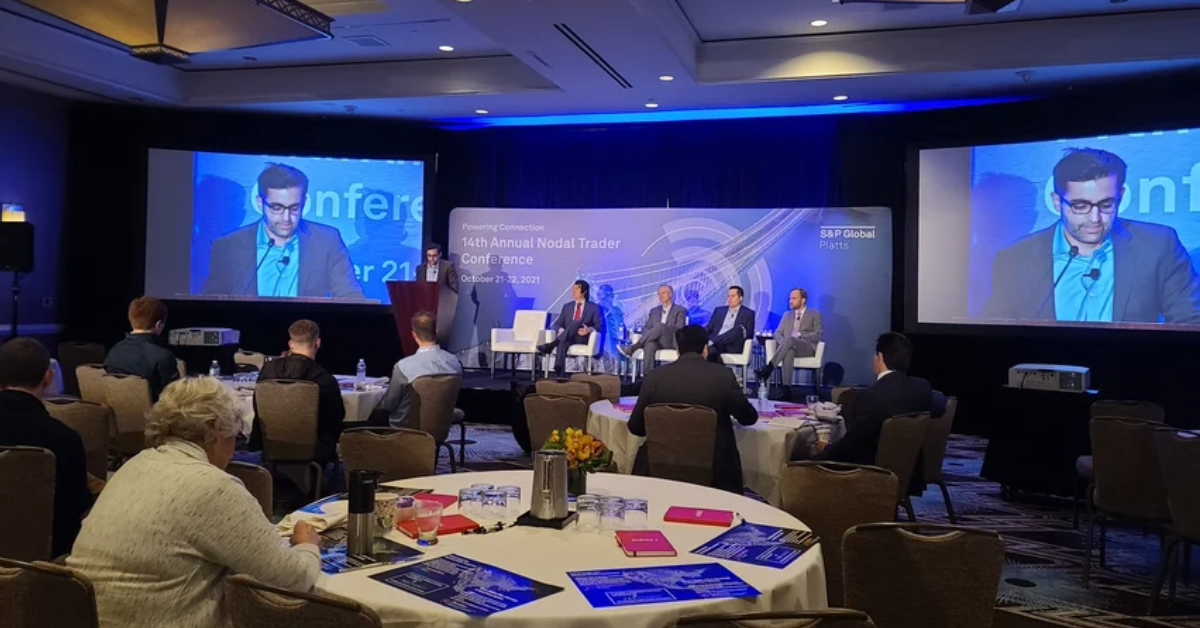Role of Renewables & Environmental Trading for Electric Power Markets
Energy Exemplar recently participated in the panel Electric Power Markets – Role of Renewables & Environmental Trading at the Platts Nodal Trader...
4 min read
Andrej Trpovski
:
September 17, 2023

Over the next two decades, India is expected to see the largest increase in energy demand of any country. To meet this growing demand, the government has set targets for adding 500 GW of non-fossil fuel capacity by 2030, tendering for up to 50 GW of renewables per year from fiscal years 2023-24 to 2027-28.
Government “Renewable Energy Implementing Agencies” (REIA) such as the Solar Energy Corp. of India (SECI) are responsible for overseeing these tenders. The SECI has been increasingly issuing Round- the- Clock (RTC) tenders to support the integration of high share of intermittent renewable energy and provide a firm and uninterrupted power supply. The importance of RTC tenders is likely to grow as more firm renewables will be required to keep grid stability.
Optimisation will be critical for delivering successful RTC tenders. Prospective projects will need to determine the capacity mix that meets tender requirements while minimising cost. The following sections will cover the key concepts and implementation requirements for RTC renewable energy, which have been successfully implemented and proven to get the best possible solution with PLEXOS.
In India, a "Round-the-Clock" (RTC) tender refers to a power purchase agreement (PPA) that requires the selected power generator to supply a specified quantity of electricity continuously, 24 hours a day, throughout the year. The RTC tender is usually designed to encourage the development of renewable energy projects with assured supply, helping to meet the country's increasing electricity demand while reducing its carbon footprint.
Under an RTC tender, the selected power generator commits to supplying a fixed capacity of electricity around the clock, typically from a combination of renewable energy sources like solar, wind, hydro, or biomass, and sometimes complemented by other sources like natural gas or coal. This type of tender aims to provide a reliable and stable supply of electricity, which is crucial for meeting the base load demand of consumers.
The Indian government has been actively promoting RTC tenders to boost the share of renewable energy in the generation stack, and to ensure a steady and dependable power supply for the country's growing population and economy. These tenders play a vital role in India's efforts to transition to a more sustainable and environmentally friendly energy system.
PLEXOS can help optimally size renewable energy and energy storage assets, accounting for contractual capacity or load following requirements. Simulation results can determine the capacity built by year for each technology, including any augmentation units required in futures years. Build decisions are optimised on technical and economic parameters and are subject to constraints that represent contractual obligations of the tender.
PLEXOS can also be used to determine the best build location for new generators. The model considers the wind and solar resource, and various locations where the profile and generational volumes differ. Load demand, network conditions and transmission line limits may also factor into this decision from a grid location perspective.
Project sizing for renewable energy assets has always been difficult. If we build more capacity than we need, we may see energy curtailment leading to a loss of revenue. And if we build less than what is required, we will not be able to fulfill the RTC contractual obligations on every occasion, which will force us to pay heavy penalty prices for contract violations.
One solution is to avoid such scenarios and to sell the excess energy to the exchange market or a third-party customer. The cost of building additional capacity that leads to curtailed generation will be balanced against meeting the minimum capacity utilization factor (CUF), as well as additional constraints, penalties, and obligations (annual, monthly, peak hours, load following, etc.). In PLEXOS, users can model not just one, but many different types of markets and market conditions to analyse how much energy can be sold to each of these markets. In the short-term energy trading market, using PLEXOS, users can identify the optimal generation mix and price forecast to decide how much energy to sell and when to sell it to different markets to maximize profits.
As the renewable energy sector in India progresses at a rapid scale, the market is becoming more complex and competitive. Recent tenders issued by SECI (Solar Energy Corporation of India) include a wide range of constraints and obligations that are causing headaches for the participating developers. These have moved from annual or monthly power supply obligations to different required peak hours on different days and more recently to load following requirements. Most energy market modelling tools do not sufficiently capture all these constraints.
This is where PLEXOS shines among the rest. PLEXOS gives users the opportunity to model custom and generic constraints that meet all kinds of project needs.
Let’s look at some examples of the types of constraints that PLEXOS can help us model.
The competitive nature of the renewable energy sector and decreasing tariff rates means profit margins are getting leaner. This is a huge cause of concern for developers as everyone is trying to minimize investment costs and maximize their profit margin. By enabling the discovery of the optimal generation mix and capacity for solar, wind and battery energy storage systems (BESS), PLEXOS allows developers to discover the optimal levelized cost of energy (LCOE) or tariff to bid competitively on the market.
PLEXOS can also help users understand sensitivities around technical and economic inputs and how these would impact the final LCOE of the project. Developers can use this to understand and mitigate project risks.
As renewable energy resources are intermittent by nature, generation uncertainty also needs to be considered. PLEXOS caters to both deterministic inputs and scenarios or introduces variability and randomness to the input profile using stochastic parameters to drive profile uncertainty. Users will be able to consider the intermittency of renewable energy resources and make informed decisions to mitigate the risk.
India’s generation capacity is expected to see strong growth, and tenders for renewables projects such as RTC will increase with it. Understanding how to effectively optimise projects for RTCs will be critical for successfully delivery. Reach out to the Energy Exemplar team below to learn more about the best and most advanced solution for your RTC modelling requirements and to secure the most competitive offer while understanding and mitigating any potential risks.

Energy Exemplar recently participated in the panel Electric Power Markets – Role of Renewables & Environmental Trading at the Platts Nodal Trader...

In our last blog, we discussed the traditional method utilities and energy organizations have taken to planning – conducting multiple resource’s...

ReNew, the largest Pure-Play Renewable Energy Company in India